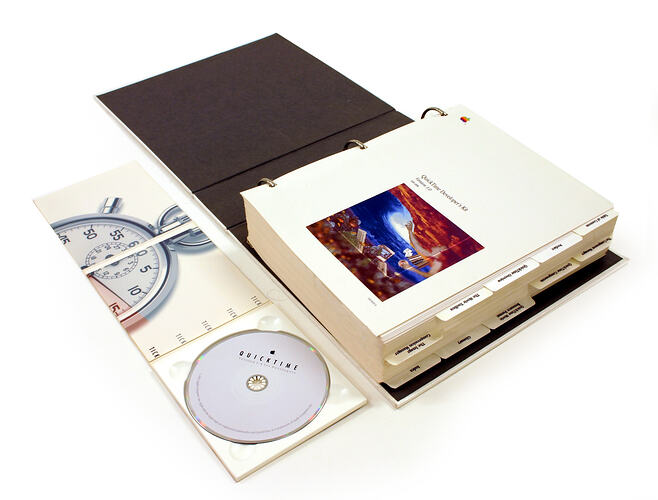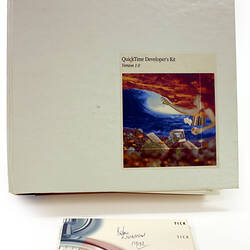QuickTime is software whose functions include the recording, editing and playback of sound and video. It can also be used to convert such media to and from formats.
QuickTime supports the incorporation of movies and audio into files created using applications such as Microsoft Word or in pages displayed by web browsers.
QuickTime is software whose file format or architecture:
1. Functions as a multimedia container for tracks that store data that is in the form of video, audio, animation, images or text in one or more of a wide range of supported file formats.
2. Allows the data to be edited as time-based data using tools that are provided, that is, Cut, Copy and Paste functions, the merging of separate audio and video tracks, and the placing of video tracks on a virtual canvas with options of cropping and rotation.
3. Supports the saving and exporting (encoding) of the file in a range of file formats (as supported by compatible codecs [coder-decoders]) and thus facilitates a range of file conversions, including for video capable iPod, Apple TV and iPhone.
4. Allows the data to be 'played', that is displayed on screen (or in the case of an audio track, 'heard') for the duration of the stored tracks.
Applications such as Final Cut Pro, iMovie and Premiere Pro allow the users to display, edit, copy and paste QuickTime movies in a similar way to working with text and graphics. They commonly incorporate additional tools for working with the data, such as video transitions and audio filters, that are more extensive than those provided by QuickTime itself.
Examples of software from Apple that take advantage of QuickTime include iTunes and iMovie.
QuickTime has both Macintosh and Windows versions.
The system software for the iPod touch and the iPhone also includes QuickTime. QuickTime for Macintosh and Windows includes a basic player application called (understandably) QuickTime Player. In earlier versions, QuickTime Player included editing and export functions that are only accessible in later versions on payment of a fee for a licence key. The unlocked version is known as QuickTime Pro. Other applications have access to the full QuickTime feature set whether or not a Pro licence has been purchased.
QuickTime was released on 2 December 1991, although it was first demonstrated publicly at a World Wide Developers' Conference in May 1991. There an astonished audience saw QuickTime's lead developer use QuickTime to play Apple's famous 1984 TV commercial 'Blade Runner' (used at the release of the first Macintosh) on a Macintosh, at the time, an astounding technological breakthrough. At first, the screen size and number of frames per second of a movie played with QuickTime was extremely limited, but this was progressively improved over a number of years until QuickTime was able to sustain playing video full screen at 25 frames per second, that is, at a size and rate comparable with that of analogue video tape.
A person from Melbourne who tested QuickTime in 1991 prior to its release described it as 'an astounding technological breakthrough'. Additionally it was well in advance of Microsoft's competing technology, Video for Windows, which did not appear until November 1992. He was working for an advertising agency at the time. He became excited about QuickTime's animation and sound capabilities, its ability to compress video files, and its use of a virtual reality panoramic photo format. The video editing software of the time required the total resources of a dedicated computer and thus was not transportable. Additionally it was very expensive; only large institutions could afford such software. QuickTime was cheap and stored on a single CD. He was thus able to use QuickTime at home and share in the raising of a family. He says that it still took many years before video was able to become full screen and 25 frames per second.
In launching a video production business in 1992, the donor purchased a QuickTime Developers Kit as well as the following items:
- Quadra 900 with 2 monitors, and CD ROM reader with SCSI cable
- Videospigot for converting analog video into digital
- Adobe Premiere 1 for video editing
The Compact Disks were read by an Apple CD Reader attached to the donor's Quadra 900 by a SCSI cable. Apple was one of the first companies to release a CD Reader, which it did in 1991. This facilitated the delivery of larger sized files of the new multi-megabyte applications including the QuickTime files on these CDs.
More Information
-
Keywords
-
Authors
-
Article types


